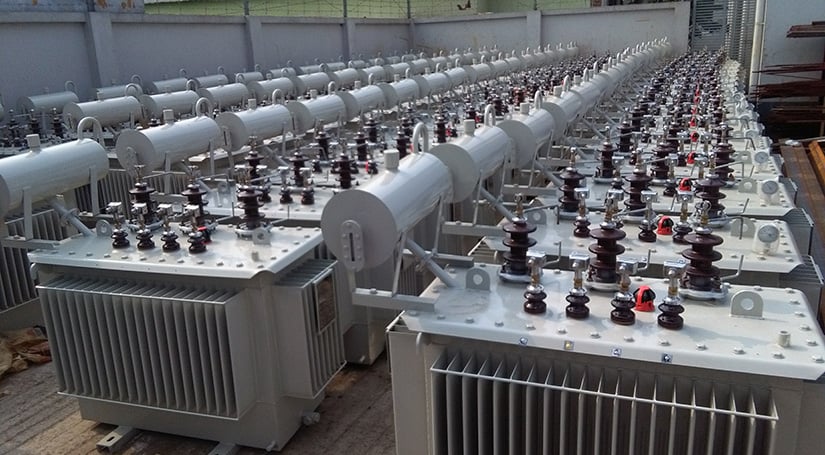What Is Driving the Demand for Distribution Transformers?
New NREL Study Further Examines Key Factors and Segmentation Behind Transformer Demand Growth Through 2050

Distribution transformers play a key role on the power grid by "stepping down" the voltage from higher electrical power line voltages to ensure it is safe for customers to use.
"There are many different types of distribution transformers of all different voltages that serve every type of load on the grid," said Killian McKenna, a researcher at the National Renewable Energy Laboratory (NREL). "Some are mounted on electrical poles, others on the ground. Some are dry-type, others are oil-immersed. Some handle voltages fit for a single house, while others service an entire industrial facility."
As U.S. electricity demand grows, so will the demand for these critical grid assets. By working closely with the U.S. Department of Energy's (DOE's) Office of Electricity, NREL is studying the increasing demand for distribution transformers. In the latest publication, NREL looks at the number of U.S. distribution transformer units, the number and capacity of the assets, the units' current age profile, and how demand for distribution transformers might increase in the coming years.
Types of Transformer Demand
Today's In-Service Distribution Transformers by the Numbers
- 60 million – 80 million distribution transformer units are currently in service.
- ~80% of transformers are lower capacity units (10 kilovolt-amperes (kVA) – 50 kVA).
- ~76% of the installed capacity is from higher-capacity units (50 kVA – 5,000 kVA).
NREL found two things drive transformer demand: the number of transformers that fail and need to be replaced and the number of new customers annually.
To understand potential demand for different types of transformers, NREL studied which transformers are needed for which major sectors and drivers of demand.
NREL finds the capacity requirements for in-service distribution transformers in 2050 could increase by up to 260% compared to 2021 levels. Much of expected growth could come from data center demand, transportation electrification, and increases in step-up transformers needed for wind and solar.
"The massive growth in data centers will require what is called three-phase, dry-type transformers," McKenna said. "The growth in public electric vehicle (EV) charging stations will require additional three-phase, oil-immersed transformers. And building electrification and at-home EV charging will require significant up-sizing of single-phase transformers."
The Risk of Aging Infrastructure
To understand the replacement rate needed for transformers, NREL examined those that are currently in service. That included documenting how old they are, when they might fail, and how new demand could increase stress on the assets.
NREL used the ages of the housing stock and failure rates to determine the ages of today's transformers. Based on the analysis, NREL finds these assets are lasting a lot longer than their expected lifespan, with approximately 55% of in-service transformers at least 33 years old and near the end of their lives.
"Assets that were expected to last 30 to 40 years are, in many cases, lasting 40, 50, and even over 60 years," McKenna said.
Pair the aging infrastructure with the anticipated increase in demand, and the rate of failures is expected to accelerate, especially after 2030.
Increasing extreme weather could also lead to investments in more resilient transformer types and replacement of current pole-mount transformers.
Long-Term Planning for a Modern Grid
NREL is refining estimates of in-service transformers and demand forecasts from new industry data and establishing different scenarios for demand.
"There are important nuances that we are working on, including what strategies utilities use to replace transformers that fail," McKenna said. "The types of transformers and strategies of utilities replacing them can have major impacts in the long run."
Due to the number of variables at play, NREL is examining how utility replacement strategies will impact demand in the long term to create scenarios for potential total demand estimates.
"This work is critical for how we plan to deliver power in the future," McKenna said. "We are examining the best strategies to manage demand in the long term and avoid short-sighted planning approaches."
Read Distribution Transformer Demand Modeling: Understanding Critical Drivers and Management Through 2050 and a previous publication in the same research effort, Major Drivers of Long-Term Distribution Transformer Demand.
Learn about NREL's grid modernization and energy analysis research, and sign up for NREL's energy analysis newsletter.
Last Updated May 28, 2025
